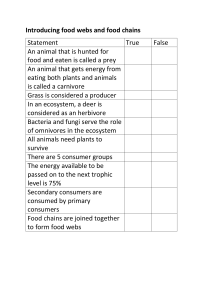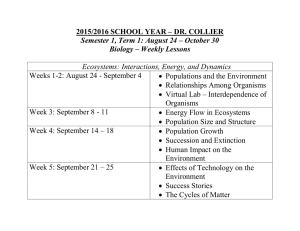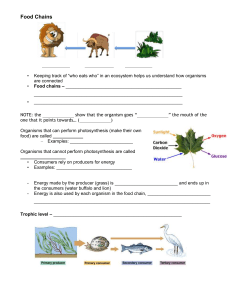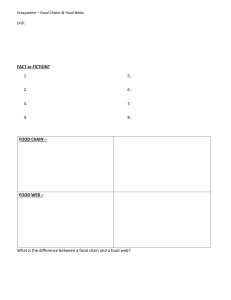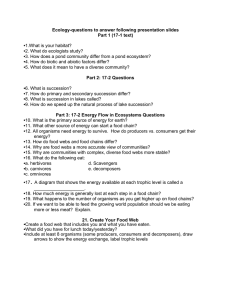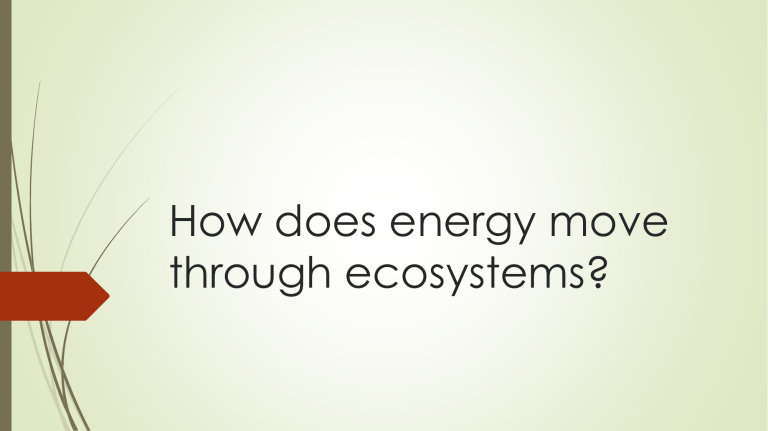
How does energy move through ecosystems? Energy is fixed by photosynthesis Sunlight is converted by plants into chemical energy (C6H12O6) This energy is stored in the tissues of plants. This energy is passed between organisms within an ecosystem. Lets start transferring the energy! Energy will be taken by other organisms to maintain their energy needs. Plants will be eaten by other organisms The energy conversion is through cellular respiration Ex. Herbivores Recap Energy is converted from the sun Into chemical energy Passed to other organisms within the ecosystem Released by cellular respiration. Food Chains. Food chains are the passing of energy from producer to consumer until it the chain stops and the energy is rereleased back into the system. Chains are just a small part of the overall system. Food webs would be all the food chains linked together. Food Chains and food webs Positive and negative feedback loops can each play a role in food webs. If one species is removed form or added to a specific food web, the rest of the food web can be affected. Example sea otters and kelp forests. We can look at food webs through levels Trophic pyramid The energy harnessed by photosynthesis enters the system of the primary or bottom level. This energy then moves up to different levels dependent of what eats it. We call these energy of food levels Trophic levels. Trophic levels All ecosystems are dependent on a continuous inflow of high energy in order to maintain their structure and function of transferring mater between the environment and organisms. Via: biogeochemical cycles. This shows that mater is conserved, and energy is only transferred The average between ecosystems is 10 percent Energy decreases as it moves through ecosystems. Where does the energy not transferred go to? How do we measure this? Primary productivity Is the rate at which solar energy is converted into organic compounds via photosynthesis
